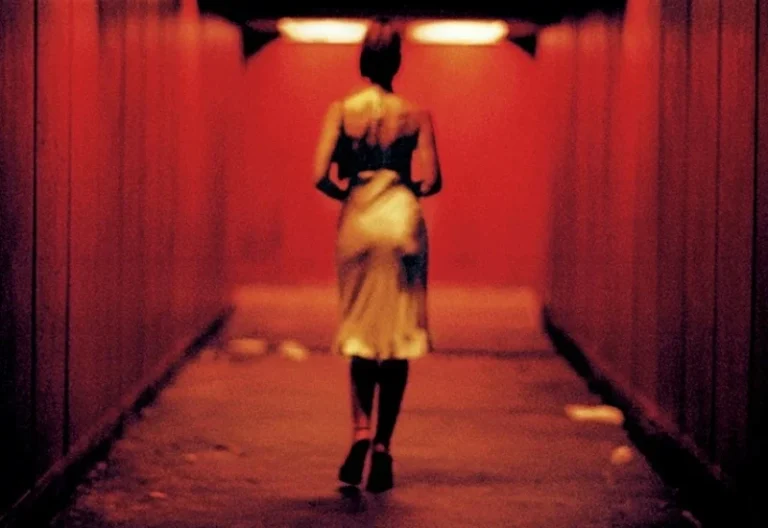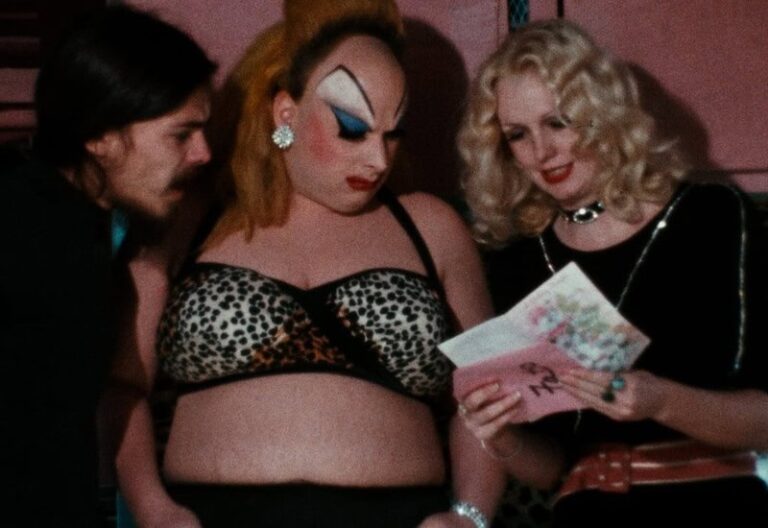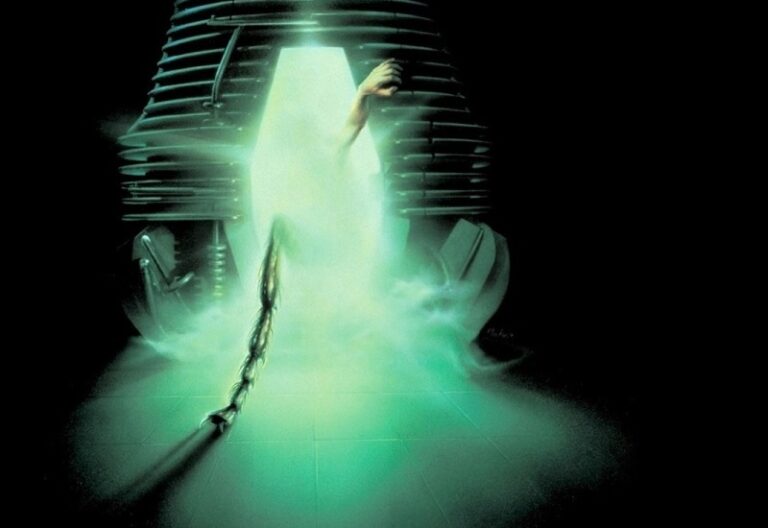the substance review
film by Coralie Fargeat (2024)
Every once in a while, the gods of cinema bestow upon us a new film in the exploitation genre through which the fiends, cinephiles, and film critics converge. While simultaneously adding a new building block to the genre’s evolution, these films invigorate the film community with newfound inspiration to collectively participate in its resurgence. From Ari Aster’s “Hereditary” and Panos Cosmoto’s “Mandy” came a flux of slow-burn and neon-infused works of atmospheric dread and a revival of the previously established folk horror genre that is still gaining momentum six years later.
Review by: Aaron Jones | Filed Under: Film Reviews
October 20, 2024
Coralie Fargeat’s new body horror film is a rapaciously putrid vision that taps into the subliminal crisis of female self-hatred and internalized aggressions through dark satire—concluding in an orchestrated crescendo of glitter, grime, and trash-inspired visceral mayhem ripe with blood-sparkling ichor.
Elizabeth Sparkle (Demi Moore), a middle-aged LA personality and celebrity turned fitness icon, sees her career extinguished after her chauvinistic and equally aged boss and corporate figurehead, appropriately named Harvey (Dennis Quaid), fires her at a luncheon, issuing a scathing remark on the double standard of beauty set in place by those who would find themselves victims of the same scrutiny were the tables turned. As Harvey devours shrimp with repugnant veracity, The Substance establishes itself tonally through its perverse physicalities, aversion to subtlety, immediacy, and hyper-stylized sun-baked shots of a vivid and plasticine Los Angeles immersing us in its superficial veneer and idolatry of beauty.

Through circumstance, Elizabeth is made aware of a secret drug that can restore her youth. Seeing a promising solution to reclaim it, and her career, which she was so abruptly robbed of, Elizabeth traverses a clandestine rabbit hole of consequence and reclamation. Sue (Margaret Qualley) emerges on the other end of a twisted and hellish version of rebirth. On the surface, the film is cosmetically exploitative and shallow. However, the unfolding tale reveals that this facade has a purpose, as the plot is elevated beyond predictable formulas to reveal dark, satirical gestures through hyper-sensationalized and didactic symbolism, delivering a bar-raising work of cinema suffused with ferocious and vicious energy.
Dealing with the perceptions of the age we imagine ourselves to be, versus the reality of our actual age, aggressively highlights the limitations of beauty and the flawed characters who, due to their neurosis, are unable to find pathways beyond the rigid roles society has prescribed to them. The responsibility is not placed solely on the women, as the film reveals through a myriad of examples; Elizabeth and Sue, if you will, are byproducts or symptoms. Both are synthesized symbols of a broader sociology. This is not a character study of the protagonists, rather, it is a character study of our social pathologies and society as a whole. The film also raises the question: What are the limits of body manipulation in the pursuit of beauty and perfection, and what are the perverse consequences of such an ambition?

Acknowledging the tragedy and vulnerabilities of the middle-aged woman doomed to a life devoid of purpose, as they are reduced to their biological roles and sex appeal, seemingly without another option, Elizabeth is willing to preserve her existence by ironically committing to a solution that may destroy her. This poses interesting parallels, blending the lines of fantasy and reality through Moore’s performance of a character who likely shares similar experiences of gender and age discrimination in a world where middle age is often a death sentence for women, but where men commonly find a more welcoming reception.
Through these concepts, the film devours the forced cheer and merriment women must endure and uphold despite the internal rage that builds with their oppression. It reveals a carnal appetite that exposes all the social disorders, identity manipulations, and unattainable standards of beauty highlighted through social media, objectification, and a male-dominated world. While unveiling the pressures of those standards, many women fall victim to selfdestructive demise, only to be blamed without any responsibility placed upon the powers that be.
In its final act, The Substance revels in its intentional grotesqueness, urging us to acknowledge the vile perversity of its nature and our complicit participation in the spectacle. It fuses its voyeuristic lens on eroticism and nudity with a staccato of jarring visuals and montages that satirize capitalism through displays of unchecked decadence. The Substance serves as a vivid lament for those trapped in emotional purgatory, and though its points can feel exhaustive or over-emphasized, the film ultimately triumphs through its virtuosity. It stands as a dark, writhing premonition of our future, shaped by a technology-obsessed generation, and a statement on industry, ego-driven pursuits, and the cost of perfection and beauty.
– “Respect the balance.”

Author
Reviewed by Aaron Jones. Based in California, he developed a passion for film from a young age and has since viewed over 10,000 films. His appreciation for the medium led him to film criticism, where he now writes for CinemaWaves, offering analysis of both contemporary releases and timeless classics. In addition to his work here, he has contributed to other publications as well. Feel free to follow him on Instagram and Letterboxd.
The scandal of the 1973 Cannes Festival, director Jodorowsky’s flood of sacrilegious imagery and existential symbolism in The Holy Mountain is a spiritual quest for…
In this classic thriller, Hans Beckert, a serial killer who preys on children, becomes the focus of a massive Berlin police manhunt. Beckert’s heinous crimes…
In 1943, Rudolf Hoss, commandant of the Auschwitz concentration camp, lives with his wife Hedwig and their five children in an idyllic home next to the camp. Hoss takes…
Cinema as an art form, has the unique ability to challenge societal norms, push the boundaries of storytelling and provoke intense emotions. One of the most striking…
A cult film is a movie that builds a devoted following without achieving mainstream success or widespread critical praise at the time of its release. These films are…
Body horror is a unique subgenre of horror films that push the limits of physical and psychological discomfort by focusing on the human body’s transformation…






